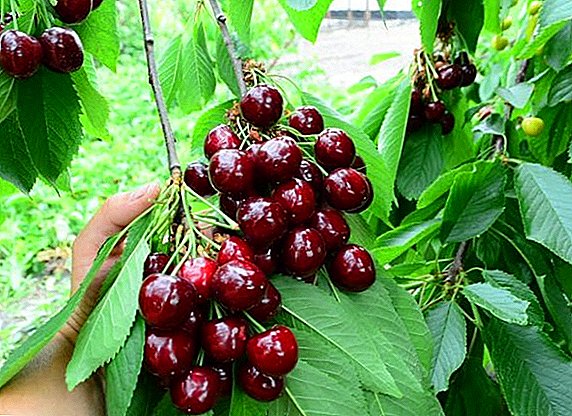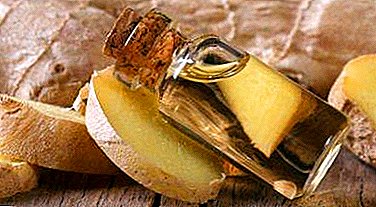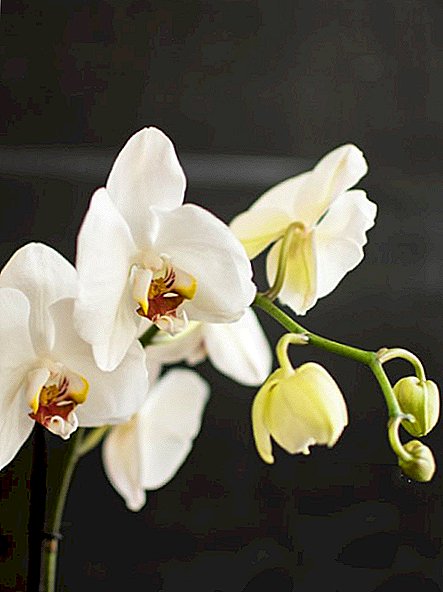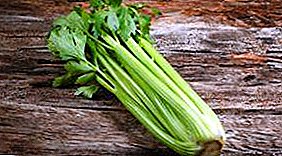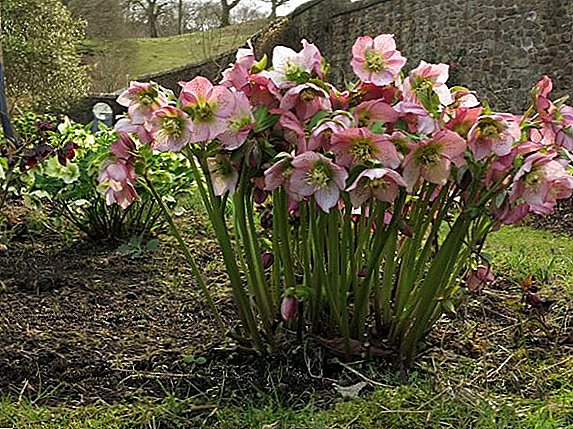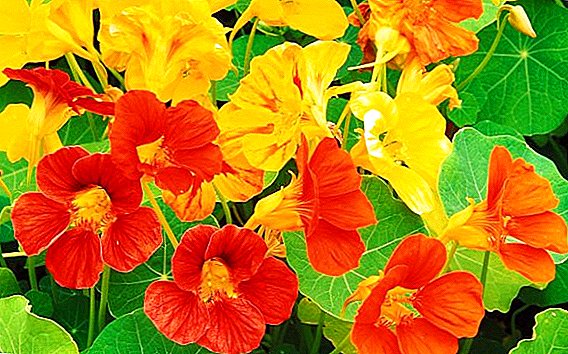
Tomatoes with a beautiful name “Russian F1 happiness” are like gardeners for large, tasty fruits and resistance to most diseases. Due to its characteristics, this hybrid fell in love with many people and it does not disappoint them.
Read the full description of the variety in our article. We will also tell where the hybrid was bred, how to grow it properly, whether it needs prevention from diseases.
Tomato "Happiness Russian F1": description of the variety
| Grade name | Russian Happiness |
| general description | Mid-season indeterminantny hybrid |
| Originator | Russia |
| Ripening | 110-115 days |
| The form | Flat-rounded with a slight ribbing at the stem |
| Colour | Pink |
| Average tomato mass | 300 grams |
| Application | Universal |
| Yield varieties | 9 kg per square meter |
| Features of growing | Agrotechnika standard |
| Disease resistance | Disease resistant |
 It is a hybrid of the first generation F1. The main difference between a hybrid and a variety is the impossibility of transferring quality traits to the next generation - the seeds will not produce a good harvest for the next year. The plant is indeterminate, it is necessary to remove growth points for good fruit development, usually 6-8 brushes with fruits are left. By type of bush - not standard.
It is a hybrid of the first generation F1. The main difference between a hybrid and a variety is the impossibility of transferring quality traits to the next generation - the seeds will not produce a good harvest for the next year. The plant is indeterminate, it is necessary to remove growth points for good fruit development, usually 6-8 brushes with fruits are left. By type of bush - not standard.
It has a strong well-leafed stem, the height is more than 2 m. The rhizome is powerful, developed, more than 50 cm. The leaves are large, dark green, “tomato” type, wrinkled structure, without pubescence. The inflorescence has a simple, intermediate type. The first inflorescence is laid over the 7-8 leaf, then comes with an interval of 1-2 sheets. There are many flowers in the inflorescence; it is possible to remove several to improve and enlarge the fruit.
Stem with articulation. According to the degree of ripening - more moderate, mature fruits are already 115 days after germination. It has a high percentage of resistance to diseases (fusarium, tobacco mosaic, verticillis, Alternaria). Cultivation is available in greenhouses (film and glazed greenhouses).
Specifications
The shape is rounded, flattened at the top and bottom, of medium ribbing. The sizes are large, weight is about 300 g, it happens more. The skin is thick, smooth. The color of ripe fruit is pink, unripe - light green. The flesh is tender, juicy. It is a lot of seeds, are distributed evenly on 4-6 cameras.
You can compare the weight of the fruit of a variety with other varieties in the table below:
| Grade name | Fruit weight |
| Russian Happiness | 300 grams |
| Ultra Early F1 | 100g |
| Striped chocolate | 500-1000 grams |
| Banana Orange | 100g |
| King of Siberia | 400-700 grams |
| Pink honey | 600-800 grams |
| Rosemary pound | 400-500 grams |
| Honey and sugar | 80-120 grams |
| Demidov | 80-120 grams |
| Dimensionless | up to 1000 grams |
Dry matter - a small amount. The collected fruits are stored for a long time, they have a good view, the transportation is well tolerated. Bred by scientists - breeders of the Russian Federation. It is registered in the State Register across the Russian Federation for cultivation in the closed soil in 2010. Acceptable cultivation throughout the Russian Federation, Ukraine.
The way of using is universal. Tomatoes have a sweet taste. Suitable for fresh consumption, as a separate product in salads, sandwiches. Does not lose taste during hot processing. Great for processing in tomato paste, sauces and juice. Some gardeners grow tomatoes "Russian happiness F1" for sale. It has a yield of more than 9 kg per 1 sq. M. With good care from 1 plant you can get about 6 kg.
| Grade name | Yield |
| Russian Happiness | 9 kg per square meter |
| Aurora F1 | 13-16 kg per square meter |
| Leopold | 3-4 kg from a bush |
| Sanka | 15 kg per square meter |
| Argonaut F1 | 4.5 kg from a bush |
| Kibits | 3.5 kg from a bush |
| Heavyweight Siberia | 11-12 kg per square meter |
| Honey Cream | 4 kg per square meter |
| Ob domes | 4-6 kg from a bush |
| Marina Grove | 15-17 kg per square meter |
 Read more about the diseases of tomatoes in greenhouses in the articles of our website, as well as methods and measures to combat them.
Read more about the diseases of tomatoes in greenhouses in the articles of our website, as well as methods and measures to combat them.You can also get acquainted with information about high-yielding and disease-resistant varieties, about tomatoes that are not at all prone to phytophthora.
Advantages and disadvantages
Deficiencies are not identified, reviews from the gardeners only positive.
Advantages marked:
- large fruits;
- bountiful harvest;
- disease resistance;
- long storage;
- marketable condition.
Features of growing
 It is resistant to cracking at the genetic level. Loves good watering and feeding. Planting seeds for seedlings in March is carried out in a common container with decontaminated, heated soil. The soil should be high in acidity and saturated with oxygen.
It is resistant to cracking at the genetic level. Loves good watering and feeding. Planting seeds for seedlings in March is carried out in a common container with decontaminated, heated soil. The soil should be high in acidity and saturated with oxygen.
The seeds are usually disinfected in a weak solution of potassium permanganate or another substance, then washed and planted to a depth of about 2 cm, with a distance of 2-3 cm between the plants. for a certain humidity.
A pick occurs when 2 well-formed sheets are formed. When initially planted in a common container, a pick is necessary for the development of the root system. Feed at least 2 times. 2 weeks before transplanting to a greenhouse, seedlings are hardened, this will allow better transfer of temperature drops. The soil in the greenhouse must be decontaminated and heated to 25 degrees at the time of planting.
Read more about the soil for seedlings and for adult plants in greenhouses. We will tell you about what types of soil for tomatoes exist, how to prepare the right soil on your own and how to prepare the soil in the greenhouse in spring for planting.
At the age of about 50 days, seedlings can be transplanted into the wells with fertilizer, the distance between them is about 50 cm. Watering the plants is carried out at the root, abundantly. Mulching is welcome. Top dressing and loosening once in 10 days. Masking is necessary. Tying on separate supports.
There are a huge number of ways to grow tomato seedlings. We offer you a series of articles on how to do this:
- in twists;
- in two roots;
- in peat tablets;
- no picks;
- on Chinese technology;
- in bottles;
- in peat pots;
- without land.
Diseases and pests
Prophylactic sprays of general action against pests and well-known diseases are necessary. The happiness of the Russian F1 - really happiness for gardeners, does not require any effort to grow, the result is excellent.
You can get acquainted with other varieties with different ripening terms using the table below:
| Early maturing | Middle late | Medium early |
| Crimson Viscount | Yellow banana | Pink Bush F1 |
| The Tsar Bell | Titanium | Flamingo |
| Katya | F1 slot | Openwork |
| Valentine | Honey salute | Chio Chio San |
| Cranberries in sugar | Miracle of the market | Supermodel |
| Fatima | gold fish | Budenovka |
| Verlioka | De barao black | F1 major |


